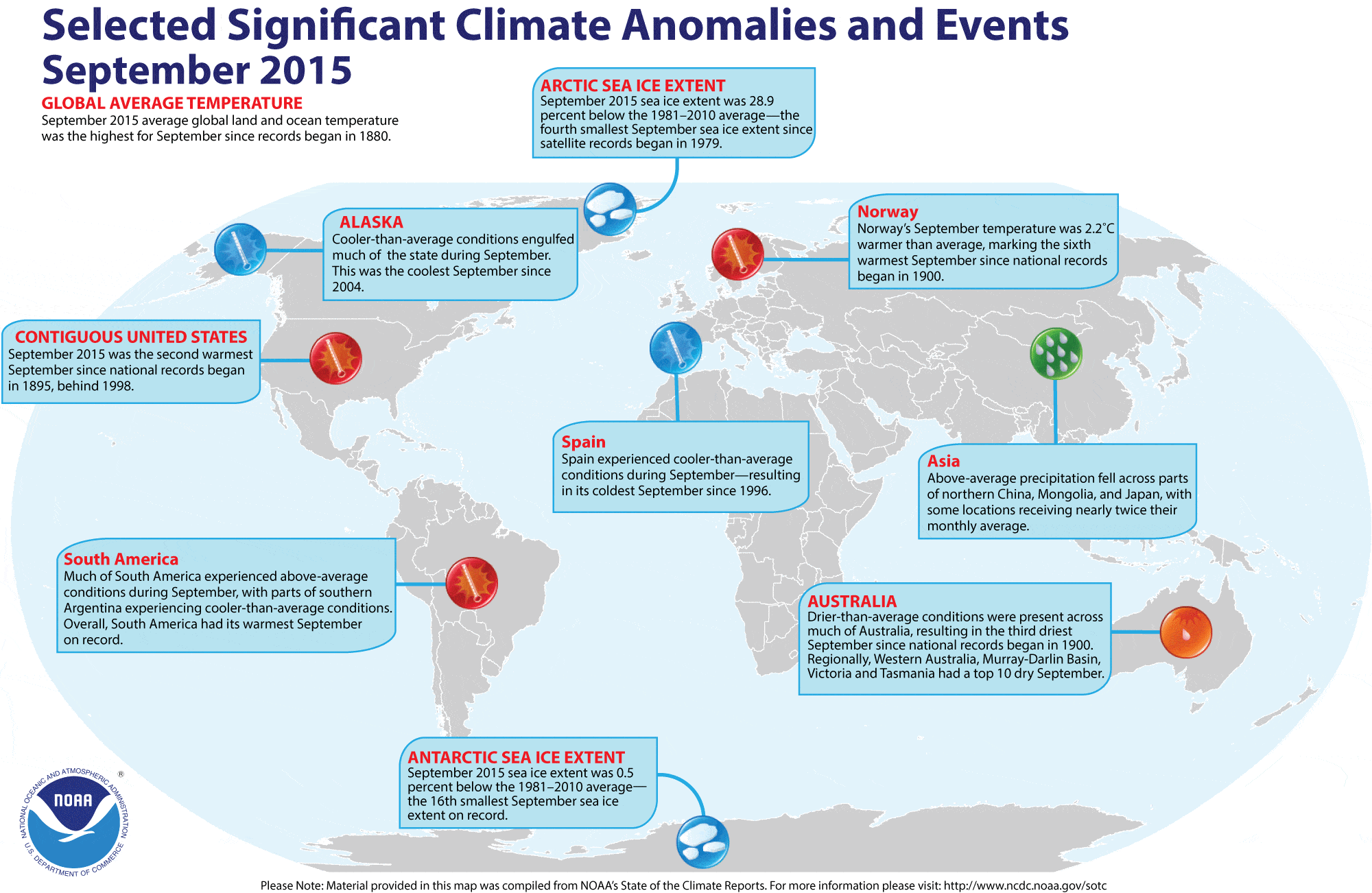The latest report, based on global average temperatures across land and sea surfaces, brings 2015 closer than ever to ousting 2014 for the most scorching year in modern times.
Last month marked the “highest September temperature in the 1880-2015 record, surpassing the previous record set last year,” the National Oceanic and Atmospheric Administration (NOAA) said in its monthly report. “The first nine months of the year were also record warm.”
So far this year, the temperature across global land and ocean surfaces has been 1.53 degrees Fahrenheit (0.85 degrees Celsius) above the 20th century average, marking “the highest for January-September” in 135 years.
Seven of the first nine months of 2015 have broken monthly historical heat records.
Unusually high temperatures were seen in September across northeastern Africa, the Middle East, parts of Southeast Asia, and selected parts of North and South America.
Some cool spots were noted at the tip of South America, far western Canada, Alaska, and parts of Central Asia.
Costa Rica has recorded above-average temperatures so far this year, according to the National Meteorological Institute. In August, temperatures in Costa Rica ranged from 0.8 to 1.4 degrees Celsius (1.5 to 3 F) above normal for the month.
See also: El Niño in Costa Rica: We haven’t seen the worst of it yet, say experts
In Canada, Ontario had a record warm September, with temperatures some 9 F (5 C) above average.
The United States marked its second warmest September on record, with a temperature 3.7 F (2 C) above the 20th century average.
Norway was also among the leading heat record-breakers, while Spain saw its coldest September since 1996. Britain was also cooler than expected.
“England and Wales each observed their coolest September since 1994,” said the NOAA report.
Warmer ocean temperatures associated with El Niño in some parts of the world helped boost the September global sea surface temperature to 1.46 F (0.8 C) above the 20th century average of 61.1 F (16.2 C).
“A large patch in the Atlantic Ocean south of Greenland remained much cooler than average,” the NOAA noted.
The amount of sea ice in the Arctic last month was the fourth smallest on record.
Sea ice cover in the Antarctic was also below average for the 1981-2010 time period, marking the 16th smallest Antarctic sea ice extent on record and the smallest since 2008.







